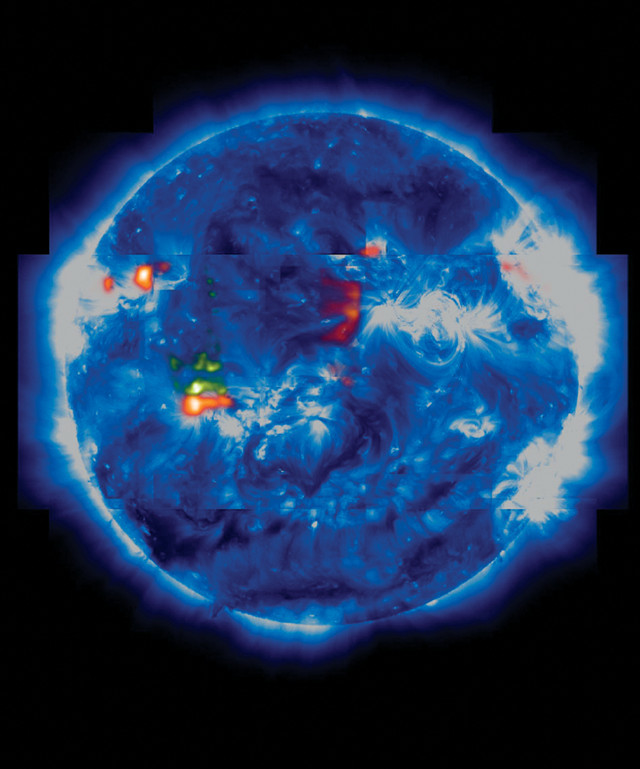
by Mary Caperton Morton Tuesday, May 12, 2015

composite map of the sun showing regions (in shades of red and green) from which slow solar winds may emanate. Credit: Brooks et al. (2015), Nature Communications.
Two types of solar winds emanate from the sun: fast winds that travel at more than 700 kilometers per second, and slow winds that move at a mere 400 kilometers per second. As they pass by Earth on their way to the outer reaches of the heliosphere, these winds — composed of charged particles called plasma — can interact with the geomagnetic field and set off spectacular auroras. Now, a newly constructed solar map, published in a study in Nature Communications, has illuminated the sources and directions of the sun’s solar winds in greater detail than ever before.
The new study, led by David Brooks of George Mason University in Fairfax, Va., confirms that fast solar winds emanate primarily from the sun’s poles. The source of the slow winds, however, has long been a mystery.
Combining new high-resolution satellite images of solar temperatures with Doppler velocity maps of the solar corona (the sun’s outer atmosphere) extending to higher temperatures than previously possible, researchers created the first plasma composition map of the entire sun. Applying a model of the sun’s magnetic field to the map, Brooks and his colleagues identified, for the first time, regions of the sun where slow winds appear to originate. Their results suggest that slow winds flow from several sources all over the sun, such as outflows of plasma near active regions, where the magnetic field is especially strong, as well as a still-unknown source possibly in the higher corona, the researchers reported.
© 2008-2021. All rights reserved. Any copying, redistribution or retransmission of any of the contents of this service without the expressed written permission of the American Geosciences Institute is expressly prohibited. Click here for all copyright requests.